After studying in Korea and Canada, Eui Park returned to Korea and worked at Next Visual Studio on over 40 films including THE CHASER, THREE KINGDOMS or THE MURDERER.
What is your background?
Hong-Ik University (Seoul-Korea) / Product Design.
Centennial College (Toronto-Canada) / Film & Video Production.
A.I (Vancouver-Canada) / Visual Effect & Digital Animation (Master grade).
For the complete filmography, click here.
How did Next Visual Studio got involved on this show?
Next Visual Studio worked on Daniel Lee’s THREE KINGDOMS in 2008. He was very satisfied with the VFX work for the film and it led to a great relationship between the two parties and we have been working on his films including 14 BLADES ever since.
How was the collaboration with director Daniel Lee?
Daniel is full of passion for films and always tries his best for the best results. He’s always attentive to the details while never losing sight of the big picture. Frankly, at times it was difficult on our end because Daniel likes trying out new things.
But he always had a clear picture of what he exactly wanted which led to good communication. As a result, we ended up with an output that the director wanted to express onto the screen. At times his strenuous efforts to share ideas with the other teams and staff slowed things down a bit but we all eventually learned that it all paid off as everyone was always on the same page. So even in the midst of all the fatigue of being on set, I was able to share that same passion that Daniel showed.
What was his approach about visual effects?
Daniel came to me for most of the CG work and shots that needed to be expressed using CG. Daniel focused more on the overall beauty of the shots more than a blockbuster shot overloaded with CG. So I set the foundational guideline for the shots while I tried my best to reflect Daniel’s ideas and opinions onto them. Again, because Daniel had such a clear picture of what he wanted, we had a very smooth overall work flow.
Can you tell us more about the main title?
In the trailer we used « Fluid CG » and created a dragon using smoke. I’d like to mention this because the reviews were great. Hollywood has used Fluid CG to create many elements of different shapes and forms in films such as THE MUMMY and PIRATES OF THE CARIBBEAN but it hasn’t been so widely used in Asia. But NEXT Visual Studio has done a lot of R & D work on Fluid CG, which has been popular in fantasy and natural disaster films, and through many in house tests, we’ve been successful in utilizing it on screen. We didn’t use it on the actual film itself but the trailer helped add a fantasy feel to it. We have recently been using Fluid CG in trailers for Korean films and Titles for Korean TV Series.
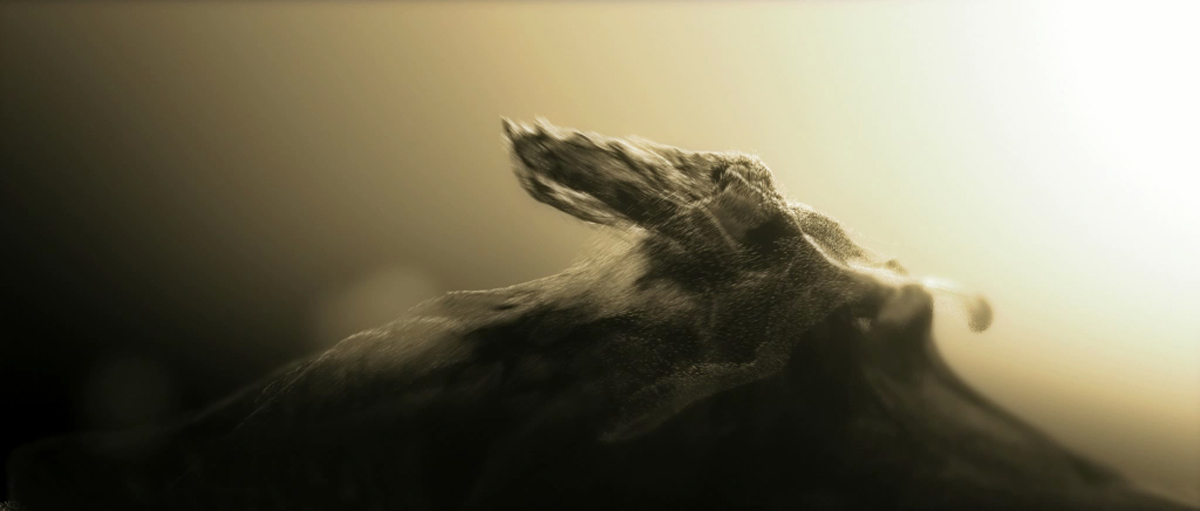 |
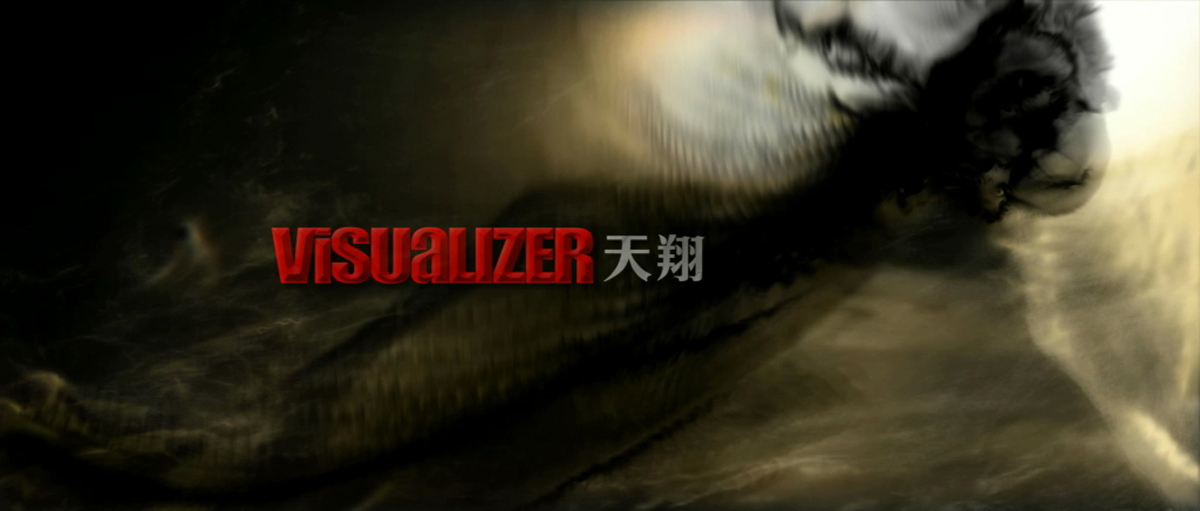 |
How did you create the super slow-motion of the warrior girl?
We shot the background and the characters in High Speed and created a digital double for the girl.
 |
 |
How did you create her dress?
We tried many simulations on the action of putting on and off the dress. We customized Maya with a simulation tool called Qualoth to make this possible. The movement of the dress itself didn’t give us much trouble. But the character wore 3 different layers of the dress and the act of taking off each of those layers caused problems like the overlapping of the different layers, unnatural expression of the fabric, and the difficulty in naturally expressing the semi-transparent fabric. We needed to put in the extra hours to solve these problems.
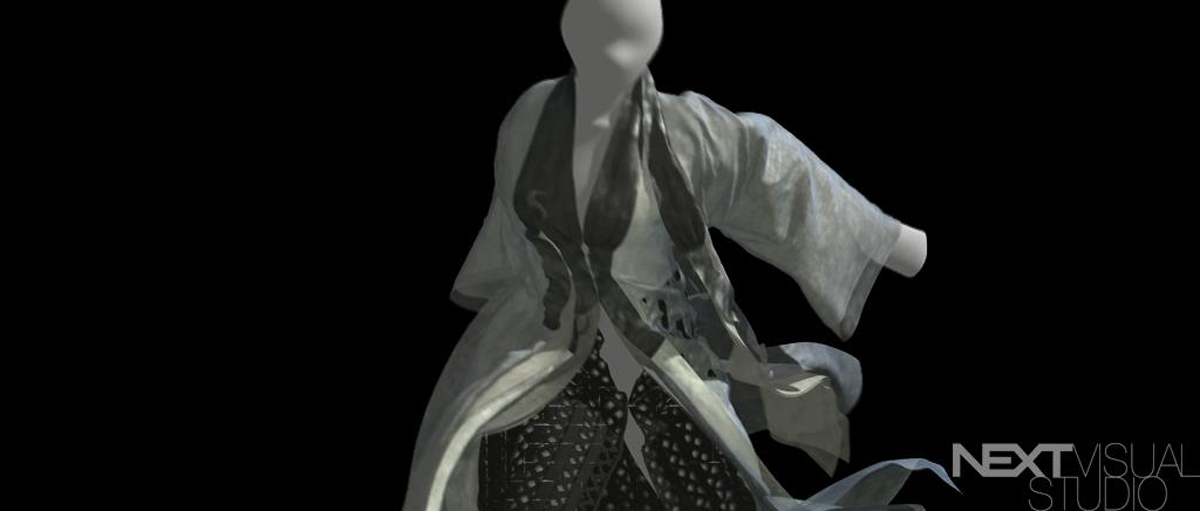 |
 |
Did you create some digital doubles for this show?
Yes, the part where the Girl Warrior fights as she puts on and off her dresses was entirely expressed using a digital double.
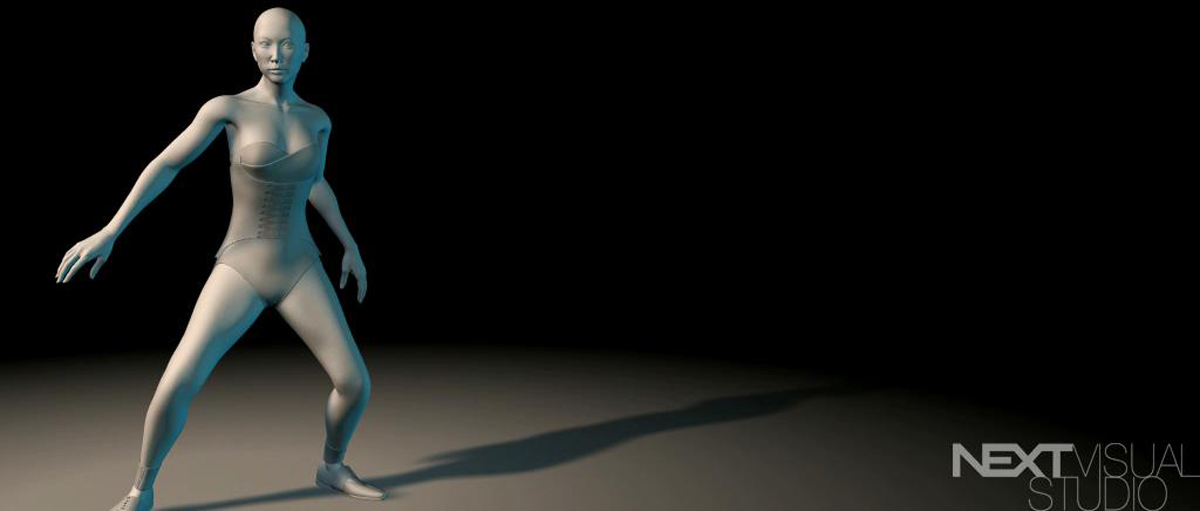 |
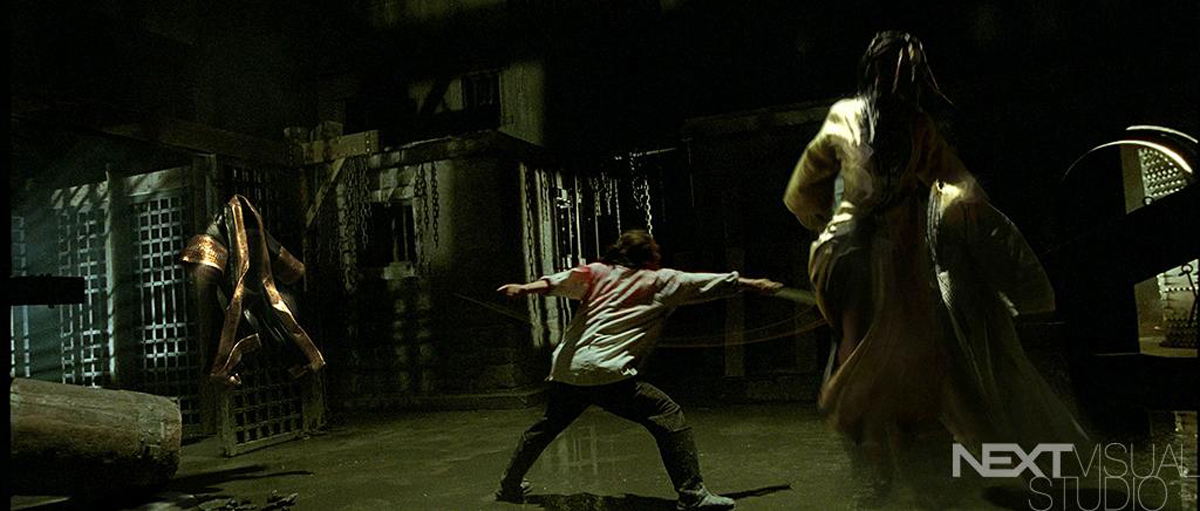 |
 |
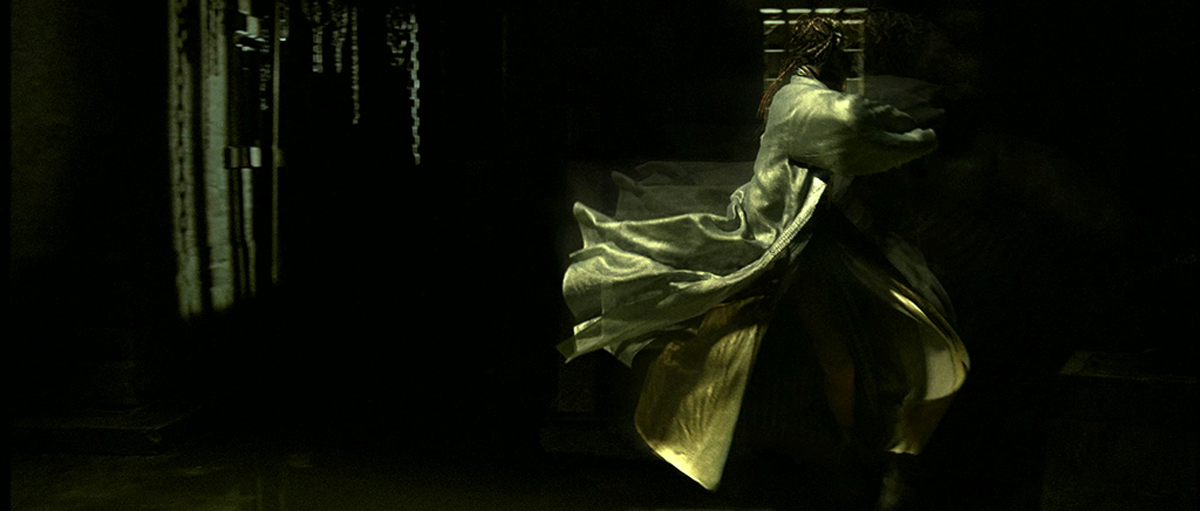 |
Can you explain to us the creation of the city in the desert?
The desert city doesn’t exist in reality. We used an ancient Silk Road concept so some of it was shot on set while the establishing shots were expressed using a Full CGI.
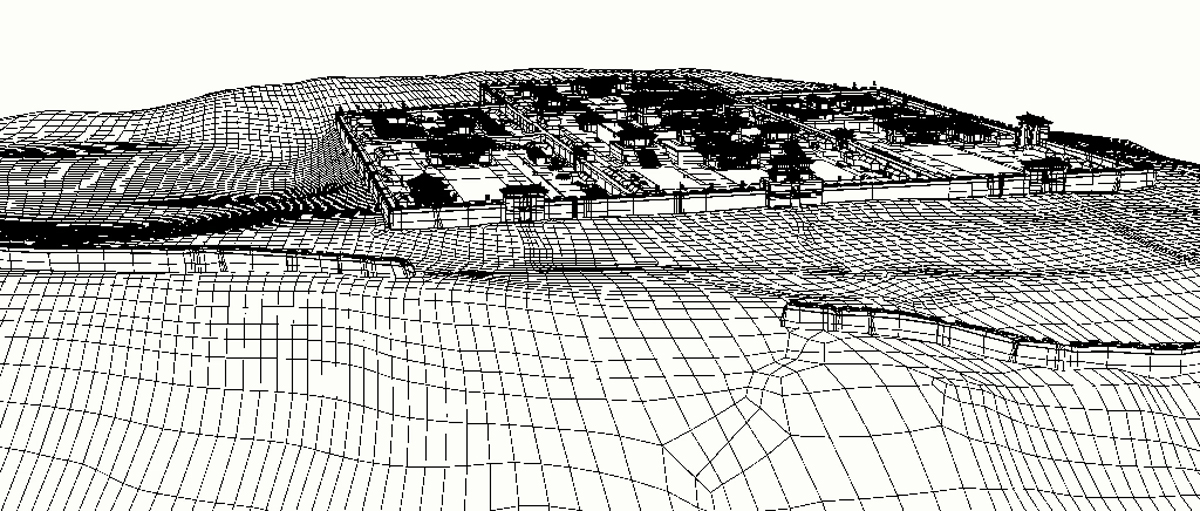 |
 |
What were your references and indications for the city?
We researched reference pictures of ancient Islamic cities keeping in mind that these towns were probably built around the Silk Road economy. We focused on creating a worn out look of the city and details such as the trail marks of wagon wheels. We also used pictures of towns we believed were similar to the ones we were creating.
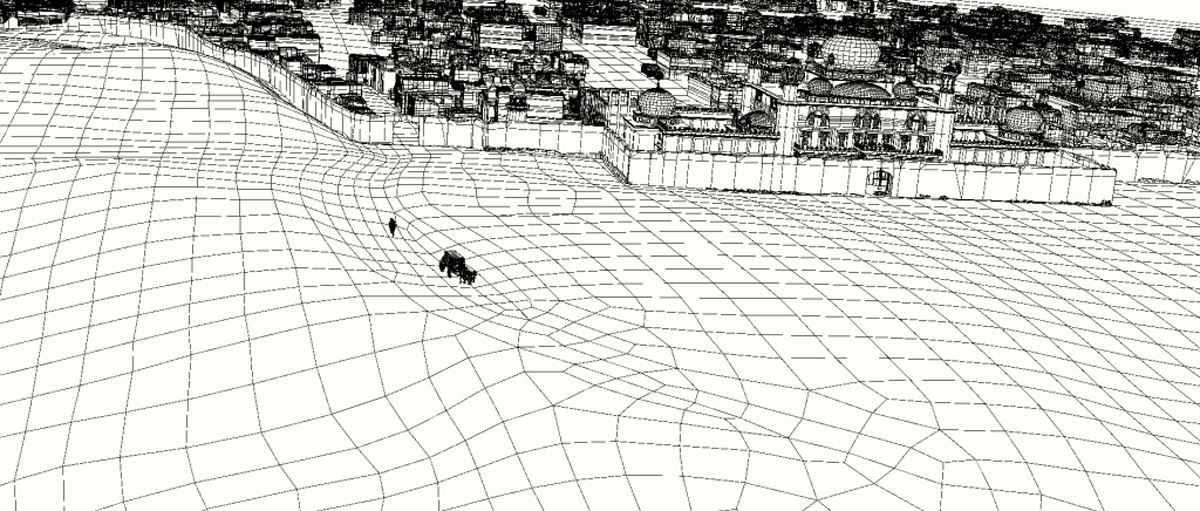 |
 |
What was the size of the sets for this sequence?
The set in Yin Chuan is a wonderfully designed set and provides great space for us to shoot in. However, due to the large number of tourists visiting the sets, the space allowed for the actual shooting was very limited. Furthermore, there wasn’t even a main building, so for each building, we had to set up a wall and create the rest.
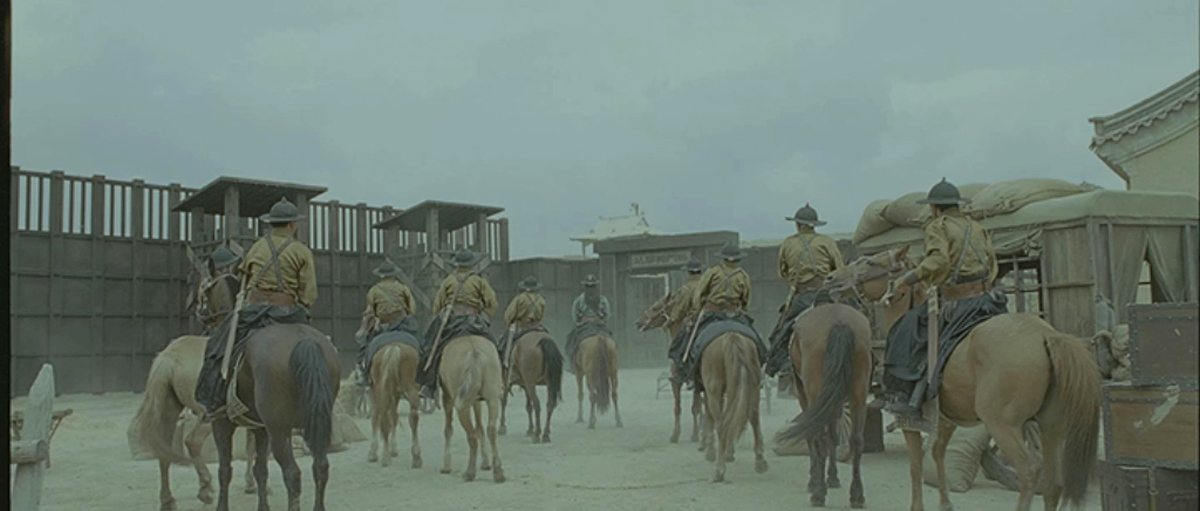 |
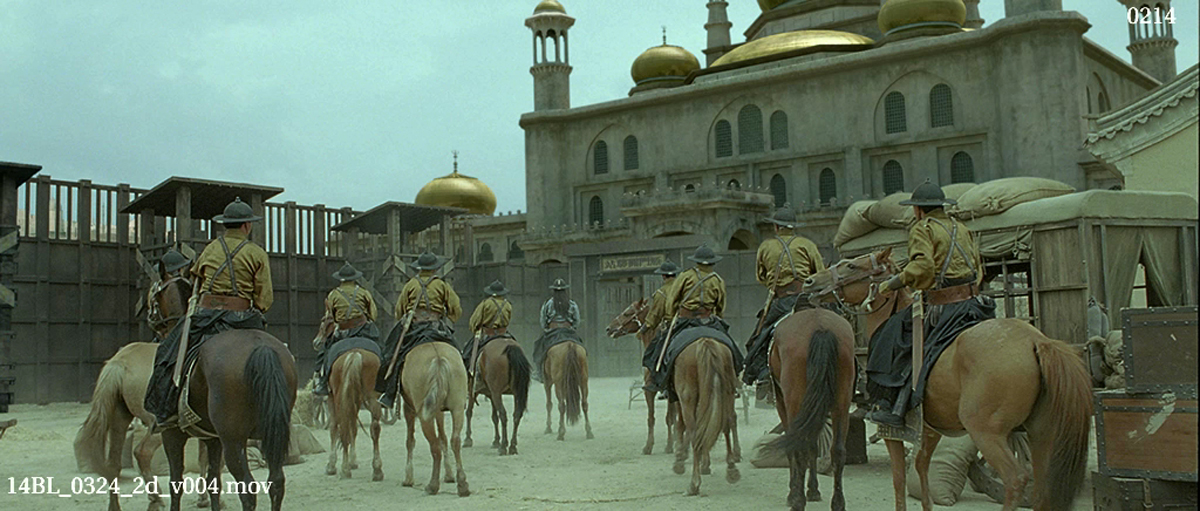 |
How did you create the fireworks?
Fireworks was a relatively easy CG work than the rest. We shot the actual fireworks on camera first but the fireworks looked too modern so we went ahead and created the entire Fireworks scene using CG. The fireworks on location was eventually used for recreational purposes for our crew as we lit up the Chinese night sky over wine and beer. We used particle effects to give fireworks a more old look.
Did you help the stunts to be more impressive?
We erased hundreds of wires and added weapons when necessary.
 |
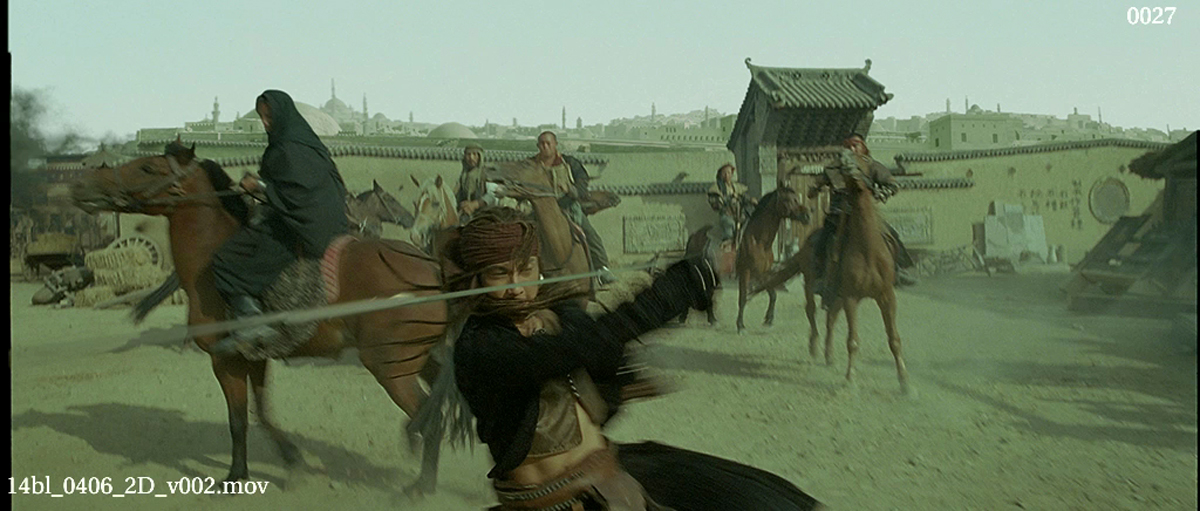 |
About the final fight. How did you create the dress in fire?
In the beginning we tried to attain as much live source as possible but the costume prepared was not a material that burned to ashes but rather melted under extreme heat. We couldn’t get the look that Daniel wanted. So we used particle effects to express the burning dress.
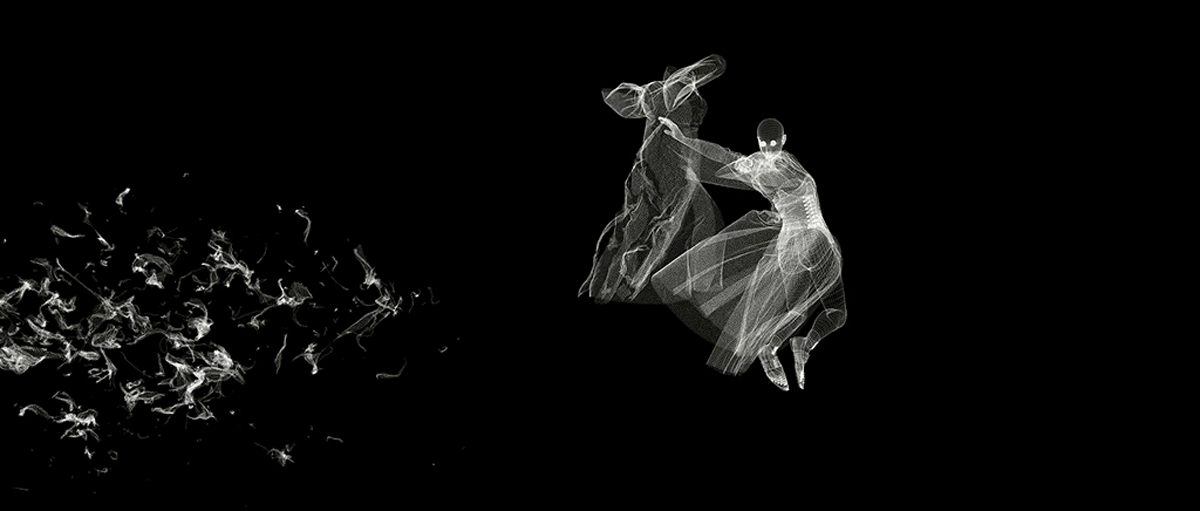 |
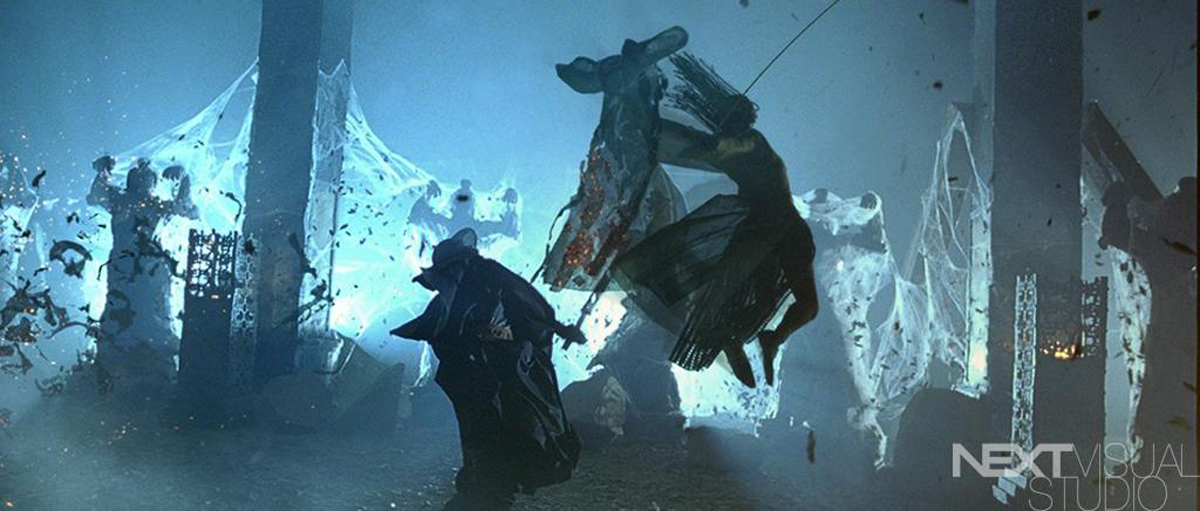 |
Can you tell us more about the warrior girl whip?
The whip around the girl’s waist was used as a belt then it was whipped out and it moved around like a snake. So we spent a lot of time animating it. We shot most of the scenes that involved whips without the actual whip.
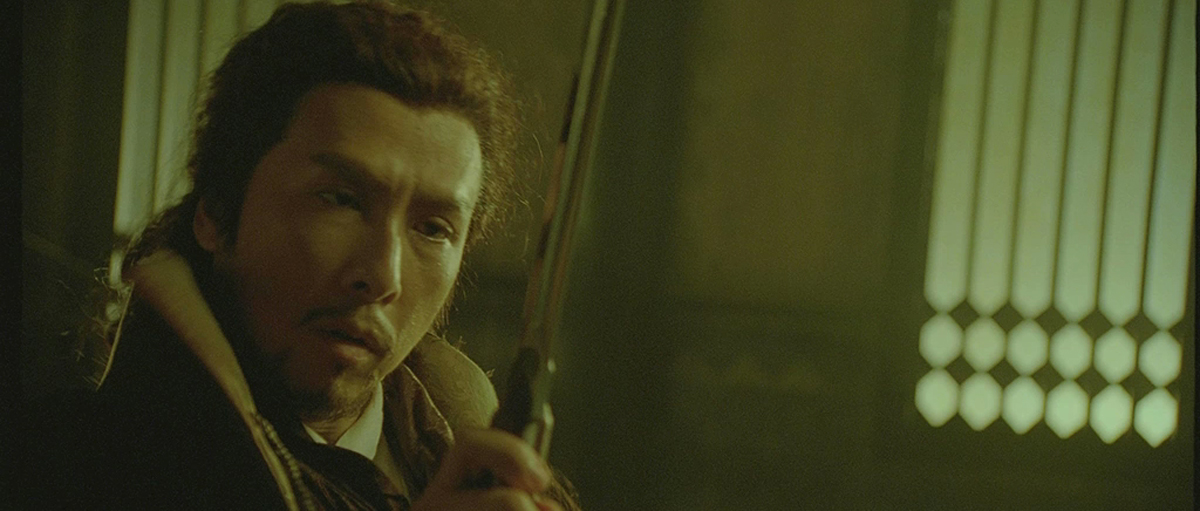 |
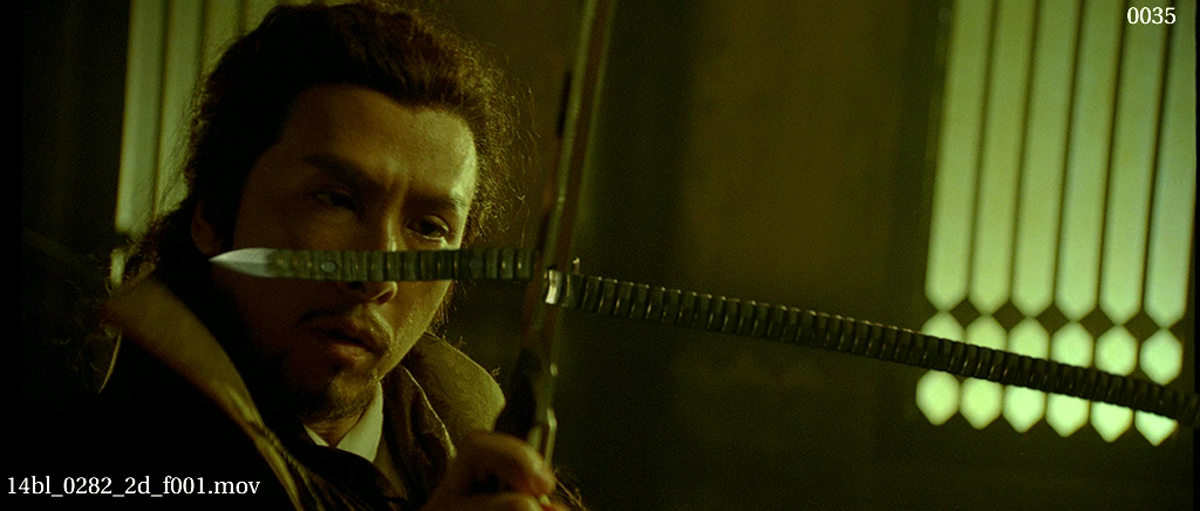 |
How did you enhanced the blades of Donnie Yen character?
For Donnie Yen, he used a sword that was attached to his wrist. It was too dangerous to use an actual blade. We used only the hilt when shooting it live then added the blade using CGIs.
 |
 |
Did you develop specific tools for this show?
We didn’t develop any new tools but for cloth simulation, we customized a software called Qualoth.
What was the biggest challenge on this project and how did you achieve it?
The most difficult shots were those involving Toto, the girl warrior putting on and off her dresses. Hundreds of simulations were done and only after many trial and errors were we able to come up with the final output.
Was there a shot or a sequence that prevented you from sleep?
The action scene in Toto and Chenglong’s last scene was the most challenging. This scene robbed the entire CG Team of sleep. The city’s Full 3D shot also gave us a tough time as we tried harder and harder for a better quality.
What are your softwares and pipeline at Next Visual Studio?
There aren’t huge differences in software amongst studios. For pipeline, we use an in house software called AINEXT. It’s a web based program so our clients can check and confirm the shots anywhere and anytime. Recently we developed an application for Iphones and Ipad so that our clients can check on our daily works and confirm them using mobile technology.
What do you keep from this experience?
I realized once again how important VFX design and concept work during the PRE-PRODUCTION stage is. With sufficient preparations in these areas, we were able to enhance the quality of CG and try different things. And through such work process, we were able to give the director what he wanted from the beginning. This boosted the overall confidence of our CG team.
How long have you worked on this film?
The actual shooting period was 3 and a half months. CG work in the post production took another 4 months.
How many shots have you done?
We worked on a total of 700 shots.
What was the size of your team?
Around 10 Supervisors and Producers and 30 compositors, 20 3D Artists, and 10 Art team members.
What is your next project?
We are currently working on Daniel Lee’s next film, WHITE VENGEANCE. This project involves around 700 cuts and most of them involve crowd simulation, Battle scenes, and work involving castles and other architectures.
What are the four movies that gave you the passion for cinema?
I loved films since I was very young. There are way too many great films in this world so it’s difficult to pick out a few. But the film that helped me grasp the essence of film was the GHOSTBUSTERS. Honestly, I was shocked when I first watched this film. I don’t think there ever was another film based on a strong story that did a better job visually expressing what all human beings have once in their lives imagined but was never able to see with their eyes. I was also inspired by films like BACK TO THE FUTURE and KINGDOM OF HEAVEN. All these films helped me choose this career as a filmmaker.
A big thanks for your time.
// WANT TO KNOW MORE ?
– Next Visual Studio: Official website of Next Visual Studio.
// 14 BLADES (JIN YI WEI) – VFX BREAKDOWN – NEXT VISUAL STUDIO
// 14 BLADES (JIN YI WEI) – TRAILER
© Vincent Frei – The Art of VFX – 2011






